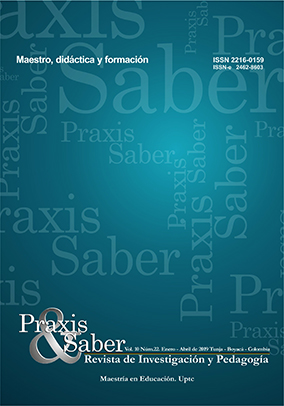Implementation of an interactive model for learning mathematics through games

Abstract
A synthesis of the results of a research project are presented. In such study, a fast and functional prototype was designed and implemented on the basis of the Bridging Design Prototype [BDP] approach proposed by Gómez and Tamblyn. The BDP of an interactive model for learning the multiplication tables was incorporated into a second-grade group of primary school by carrying out activities involving both students and teachers inside the classroom. The study focused on analyzing how this prototype strengthens the development of mathematical thinking skills in children while they learn the tables through games. Rapid ethnography was the research method utilized in the study given that it allows for participant observation in mathematics instruction.
Keywords
didactics, interactive model, cognitive processes, Bridging Design Prototype, mathematics instruction
Author Biography
Angélica María Rodríguez Ortiz
Doctor en filosofía por la UPB (Medellín).
Magíster en Educación, Licenciada en Filosofía y Letras. Líder de la maestría en Enseñanza de las Ciencias, modalidad virtual. Docente investigador del grupo SEAD-UAM. En la línea educación y desarrollo territorial.
Claudia Patricia Marín Ortiz
Magíster en Diseño Interactivo,
Diseñadora Visual.
Docente de tecnologías en diseño Universidad de Caldas y Politéctico (Manizales)
References
- Referencias
- Ausubel, D., Novak, D, y Hanesian, H. (1983). Psicología educativa: un punto de vista cognoscitivo. 2da. ed. México, D. F.: Trillas.
- Bloom, B., Furst, E., Hill, W., Krathwohl, D. R. (1956). Taxonomy of Educational Objectives: HAnbook 1. The cognitive Domain. Addison-Wesley.
- Bruner, J. S. (1969). Hacia una teoría de la instrucción. México, D. F.: UTHEA.
- Carvalavilla Fernández, J. L., y Marín Rodríguez, M. (2001). La educación matemática en el 2000. Cuenca: Ediciones de la Universidad de Castilla.
- Duval, R. (1999). Semiosis y pensamiento humano. Santiago de Cali: Universidad del Valle.
- _______. (2006). Un tema crucial en la educación matemática: la habilidad para cambiar el registro de representación. La Gaseta de RSME, 9 (1), pp. 143-168.
- Fulton Suri, J. (2007). Involving people in the process. Keynote presented at Include Conference. Paper presented at the Include. London: Royal Colege of Art, Helen Hamlyn Research Institute.
- Giacomin, J. (2012). What is Human Centred Design? The Journal Design, 17 (4). pp. 606-623. DOI: http://dx.doi.org/10.2752/175630614X14056185480186. DOI: https://doi.org/10.2752/175630614X14056185480186
- Gómez, G. (2009). “Gaining entry to real settings with a bridging design prototype”. En: 10th International Conference NZ Chapter of the ACM's Special Interest Group on Human-Computer Interaction. New York, United States of America. pp. 17-20. Recuperado de: http://dl.acm.org/citation.cfm?id=1577786 . DOI: https://doi.org/10.1145/1577782.1577786
- Gómez, G. y Tamblyn, R. (2012). “Product development in a small it firm: an interaction design perspective”. En: Innovation Conference. Melbourne, Australia. pp. 1-5. Recuperado de: http://gloriagomez.com/pubs/gomez-pinc2012.pdf.
- Hernán-Losada, I. (2009). «Conclusiones sobre la aplicación de la Taxonomía de Bloom al diseño de herramientas pedagógicas» (pp. 139-150). En: Actas del I Seminario de Investigación en Tecnologías de la Información Aplicadas a la Educación (SITIAE 2007). Ed. Dykinson S. L.
- Keates, S. & Clarkson, P. J. (2003). Countering design exclusion. London: Springer-Verlag. DOI: https://doi.org/10.1007/978-1-4471-0013-3
- Norman, D. A. (1990). La psicología de los objetos cotidianos. Madrid: Nerea.
- ___________. (1999). The Invisible Computer. Cambridge: The MIT Press Mass.
- Piaget, J. (1969). El nacimiento de la inteligencia en el niño. Madrid: Aguilar, S. A.
- Vygotsky, L. S. (1978). Mind in society: The development of Higher Psychological Processes. Cambridge, MA: Harvard University Press.
- ____________. (1995). Pensamiento y lenguaje. Trad. María M. Rotger. Ediciones Fausto
